Adorning patios and pub frontages across Britain, the cascading blue of Lobelia erinus is a much-loved symbol of summer. But there is much more to this diverse genus than the annual trailing lobelia for hanging baskets.
There are shrubby, annual and perennial species of lobelia, with giants such as the spectacular Lobelia deckenii from Tanzania contrasting with the tiny, mat-forming Lobelia angulata endemic to New Zealand. Their abundant flowering, colour range and tendency to hybridise has resulted in many garden-worthy plants.
Lobelias tend to have flowering stems topped with two-lipped, tubular flowers divided into five lobes. The taxonomy has fluctuated with various other genera, including Pratia and Isotoma, now included under the umbrella of Lobelia.
When do lobelia flower?
Lobelias begin flowering in mid-July, providing a useful bridge from mid- to late summer. They inject colour often well into September.
IN BRIEF: Lobelia
What Lobelia is a diverse genus of more than 400 species of annuals, perennials and shrubs. The more cold-tolerant species have been greatly important to the development of ornamental cultivars.
Origins Most are concentrated in tropical or warm temperate regions but a few extend their range into cool temperate zones. The 400-plus species have a wide distribution, with one species, Lobelia urens, found in parts of southern Britain.
Season The most popular hybrids flower from mid-July until well into September.
Size There is a wide range in size from the tall and shrubby to diminutive, sprawling species with wiry stems.
Conditions The most popular cultivars tolerate sun or partial shade but require consistently moist soil in the summer. They are best kept slightly drier through the colder months, in a sheltered position or in a dry mulch to protect them from frost.
Hardiness Generally hardy, RHS H3-H5. The North American Lobelia siphilitica is one of the hardiest, coping with temperatures down to –10°C (RHS H4, USDA 8a-9b).
Lobelia types explained
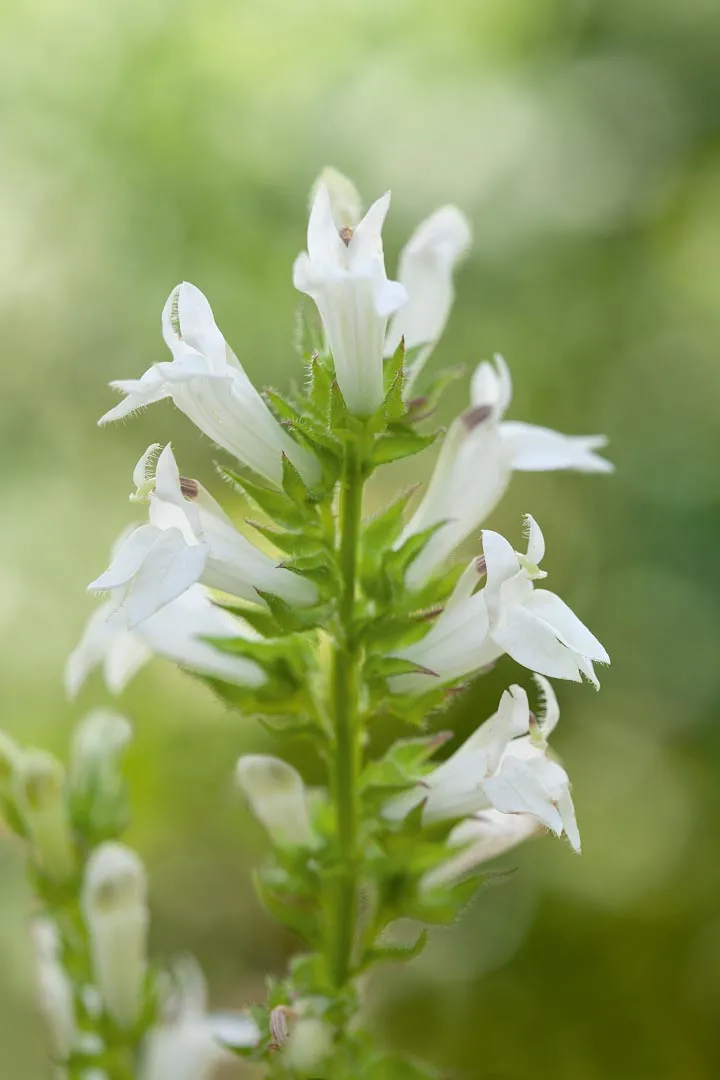
In addition to the blue annual trailing lobelia, Lobelia erinus, by far the most familiar group of garden lobelias are the x speciosa hybrids. These are large-flowered crosses between Lobelia cardinalis and Lobelia siphilitica, both hardy North American species, and have become firm garden favourites.
The large, colourful flowers of x speciosa hybrids easily justify their place in the border. They come in a wide range of colours from white, blue and deep purple through to vibrant red, and tend to send their flowering stems up 40cm to 1.2m above fleshy, evergreen rosettes.
The wild species lobelias such as Lobelia urens and Lobelia spicata have a more subtle elegance.
Where to plant lobelia
Most hardy lobelias are best grown in rich, moist, slightly acid soils in partial shade. They will tolerate full sun in cooler climates as long as the soil does not become too dry.
Lobelia siphilitica, Lobelia cardinalis and their hybrids, Lobelia x speciosa, are all well adapted to the wooded edges of streams. Their larger flowers also make a bold statement in a border.
One of the most useful lobelias is Lobelia cardinalis, which provides an intensity of red rarely found in the shade garden.
The more demure and variable flowers of species such as Lobelia spicata and Lobelia siphilitica appear more comfortable in a naturalistic planting scheme. The same can be said of the older, smaller-flowered cultivars.
Some of the smaller, creeping forms are useful woven through the moist leaf litter
of a woodland garden. Plants such as Lobelia angulata will work themselves among the leaves of larger plants, sending up masses of white, star-like flowers and can be planted as plug plants into meadow grass. Other species also grow well in grass, such as the rare, native Lobelia urens.
How to plant lobelia
Almost any soil where lobelias are going to be planted will benefit from the addition of organic matter, such as leaf mould or regular garden compost. This will help improve the structure of soil, preventing waterlogging in the winter but increasing water retention in the summer.
How to grow lobelia from seed
Many species of lobelia are easy to grow from seed. Sow seeds in late winter and they should make flowering plants in their first year, but the seedlings will be variable.
Caring for lobelia
Once established, their glossy rosettes are highly decorative but can be prone to slugs and snails and are worth a bit of spring protection.
If winter temperatures regularly fall below freezing during winter, a dry covering of leaves will help reduce the risk of rotting. After the worst of the frosts have passed, these leaves should be cleared away.
The rosettes of named hybrids should be divided in early spring.
After some decent rain in late spring it is beneficial to mulch plants to help retain moisture into summer.
It is suggested that watering the rosettes as the season transitions into autumn improves their hardiness.
Lobelias usually do not need staking.
The best lobelia for your garden
1
Lobelia x speciosa ‘Pink Elephant’
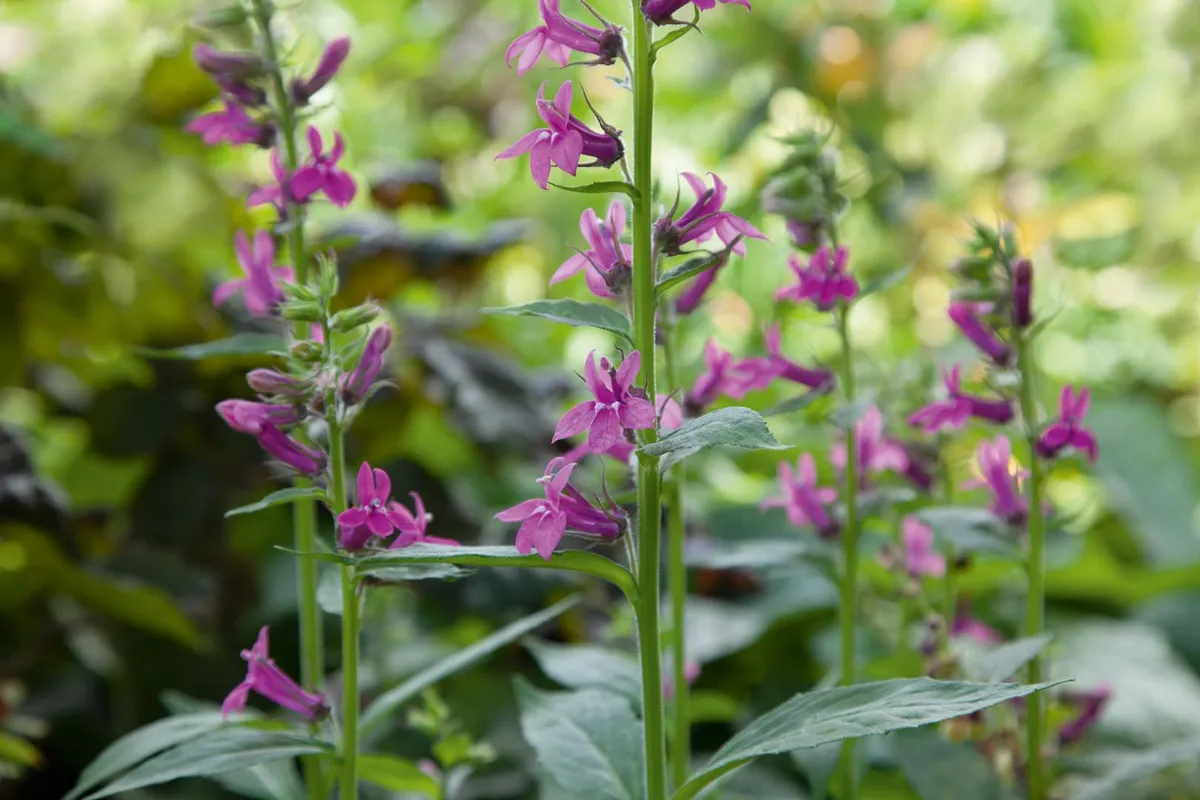
A fantastic grower from Ireland, with strong, evergreen rosettes, that retains much Lobelia siphilitica vigour. Clear-pink flowers are held on tall stems. Established clumps spread up to 60cm. An improvement on the popular Lobelia ‘Compton Pink’.
1.2m. AGM. RHS H5.
2
Lobelia x speciosa ‘Hadspen Purple’
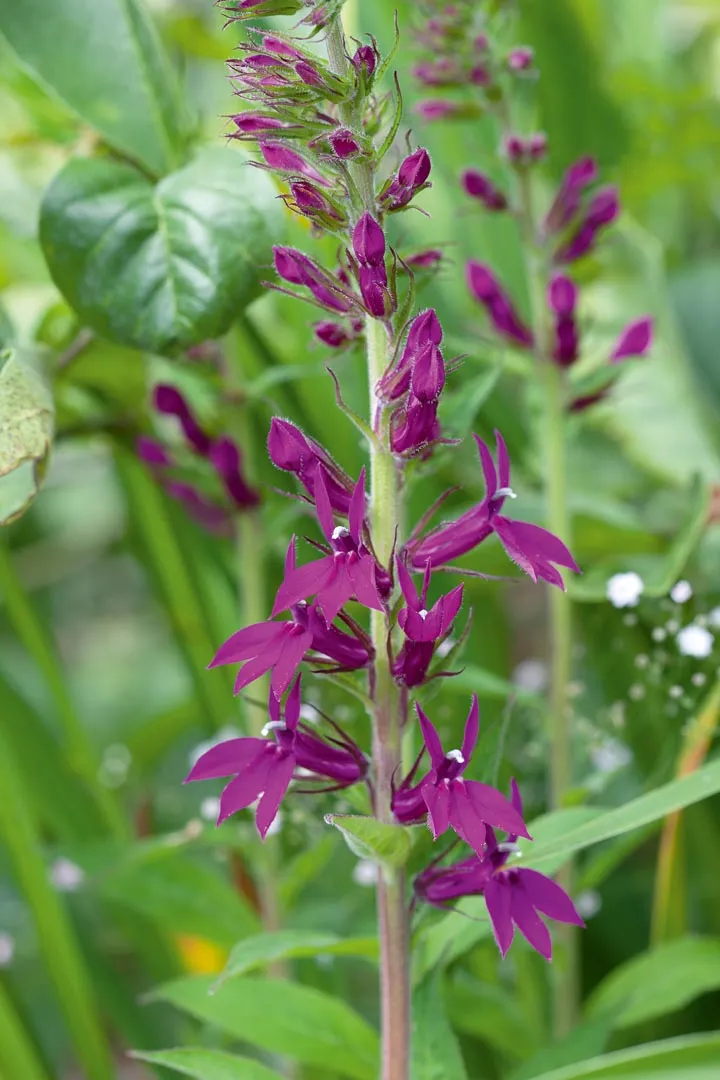
Named by Nori Pope after the Hadspen estate (now the Newt in Somerset) where he and his wife Sandra based their famous nursery, this hybrid has gained deserved popularity since it was released in 2002. Velvety-purple flowers held atop strong stems. An easy grower.
60cm-1m. RHS H5.
3
Lobelia tupa
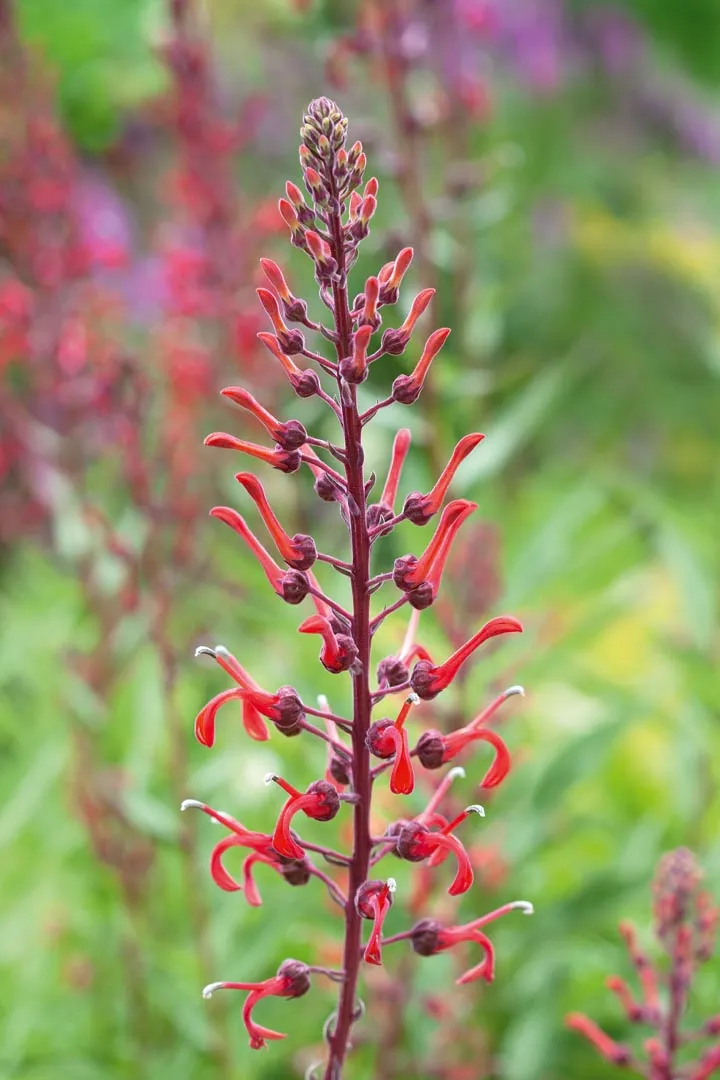
With its claw-like, orange-red flowers held on tall, upright stems that have narrow, hairy, grey-green leaves this is one of the most iconic lobelias. Known as devil’s tobacco, this Chilean native appreciates a sunnier, drier site than most.
2m. RHS H4.
4
Lobelia laxiflora subsp. angustifolia
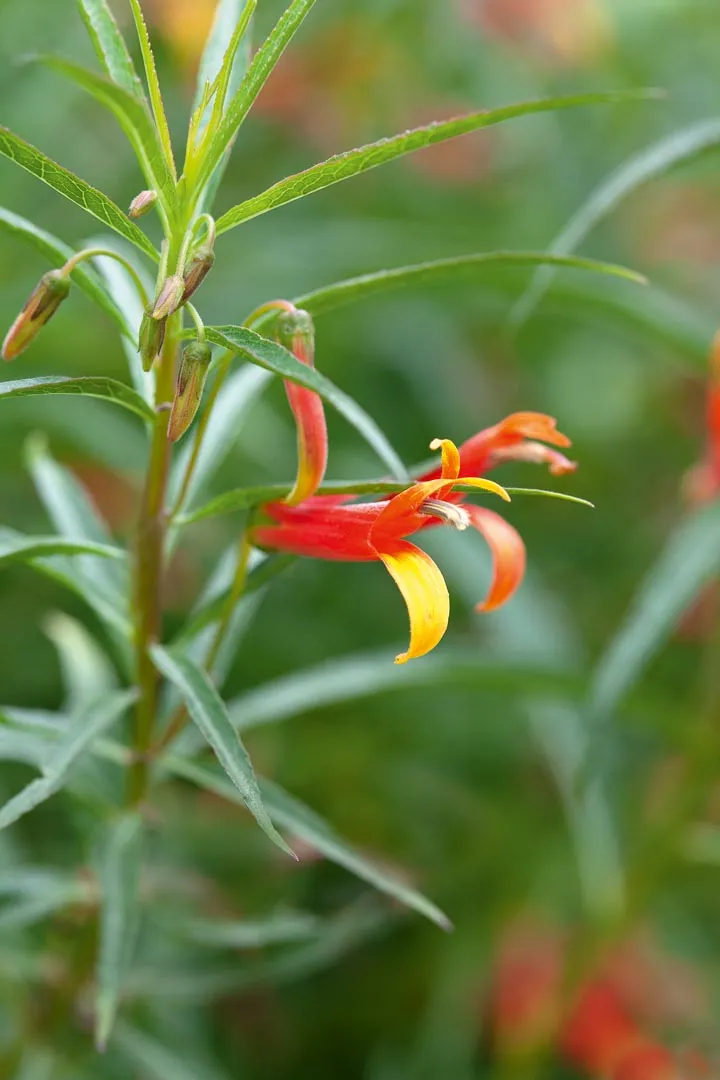
This shrubby lobelia thrives in sunny/drier situations adapted to southern US states and Mexico where it is found at fairly high altitude. A narrow-leaf form, more cold-tolerant than Lobelia laxiflora.
1m. RHS H3.
5
Lobelia x speciosa ‘Ruby Slippers’
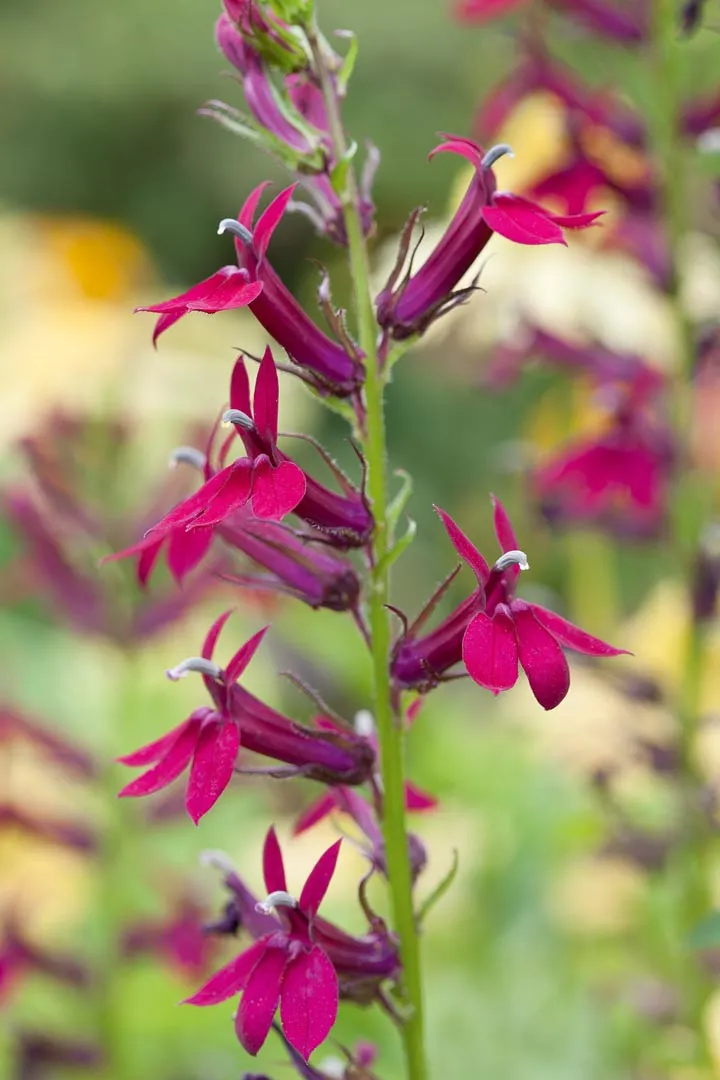
An early backcross from 1989 by Thurman Maness of Wildwood Nursery in North Carolina, USA. It may not have the largest of blooms, but it is one of the best red-flowered lobelias. Very long lived.
80cm.
6
Lobelia x speciosa ‘Red Demon’
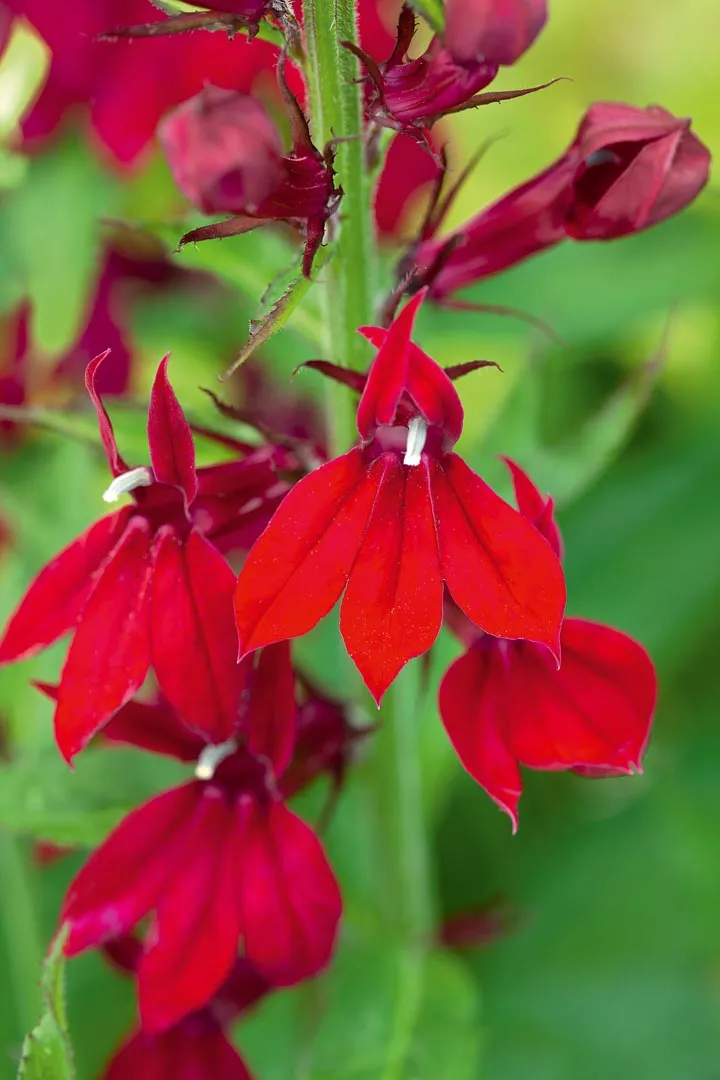
A new, red cultivar with very large flowers that is not yet widely available. Barry Clarke, who holds the National Collection of lobelia, admits it is not the most vigorous but deems it an improvement on the ever popular Lobelia cardinalis ‘Queen Victoria’.
1m.
7
Lobelia cardinalis ‘Elmfeuer’
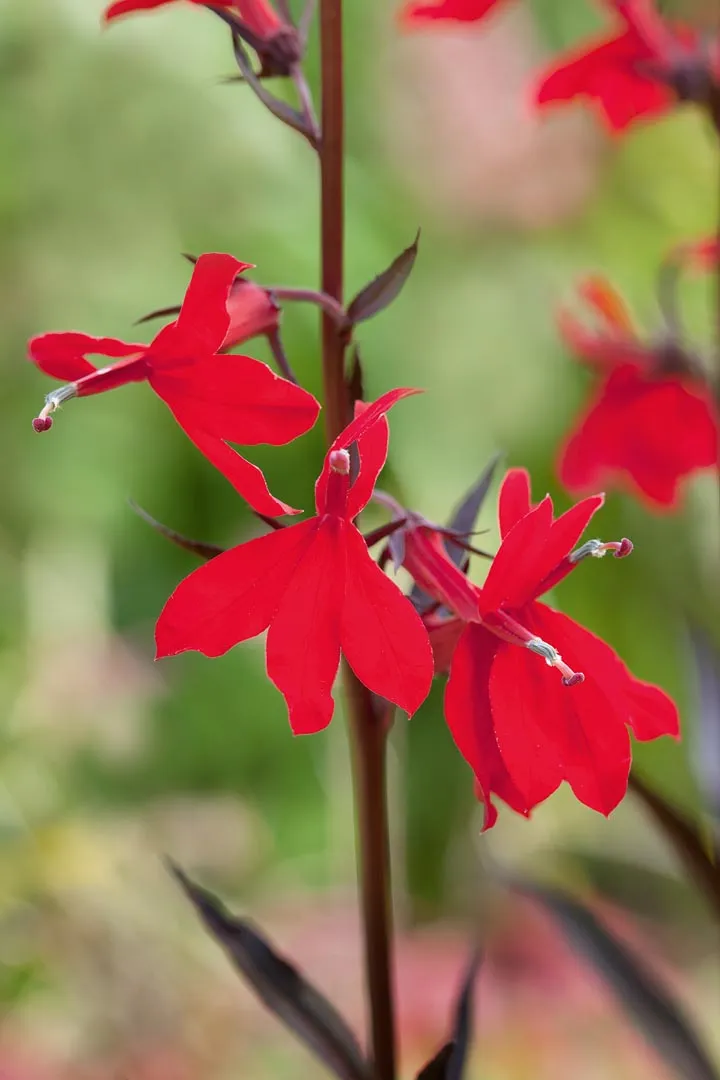
A dramatic, dark-leaved and red-flowered cultivar, often noted by nurseries as synonymous with Lobelia cardinalis ‘Queen Victoria’, although breeder Barry Clarke suggests it is a definite hybrid.
60-80cm. RHS H3.
8
Lobelia urens
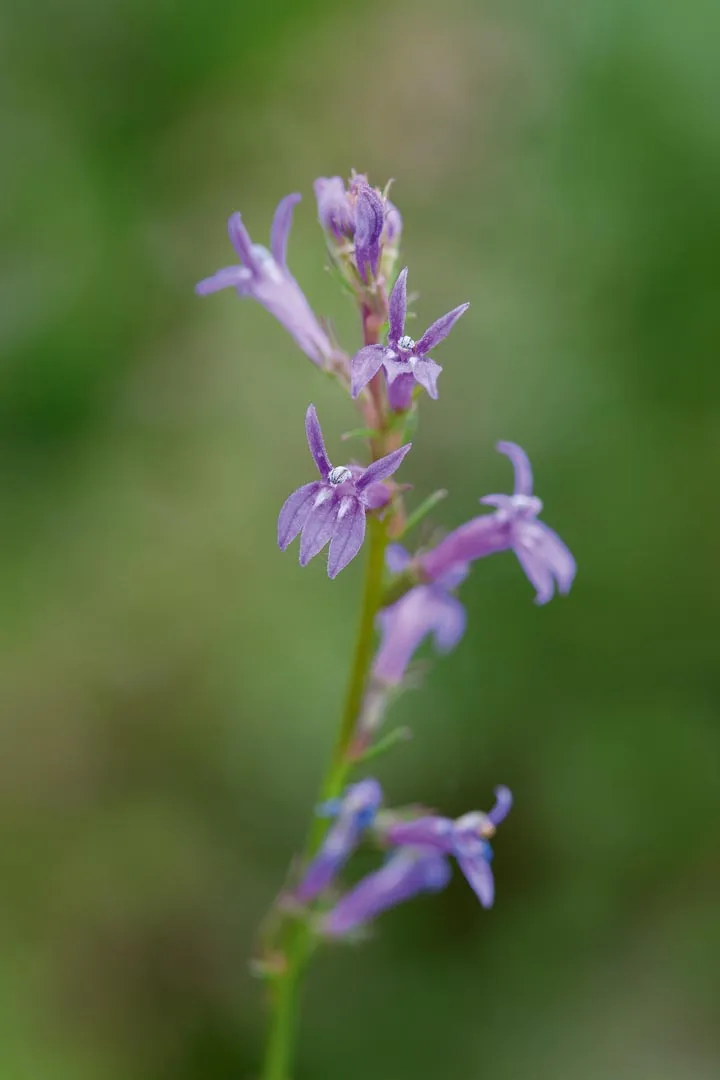
A rare, British native, mainly found in Devon among grass on poor, acid heathland. Sometimes called ‘flower of the Axe’, it thrives on intermittently disturbed ground. Pretty, small, blue-purple flowers.
40cm. RHS H4.
9
Lobelia spicata
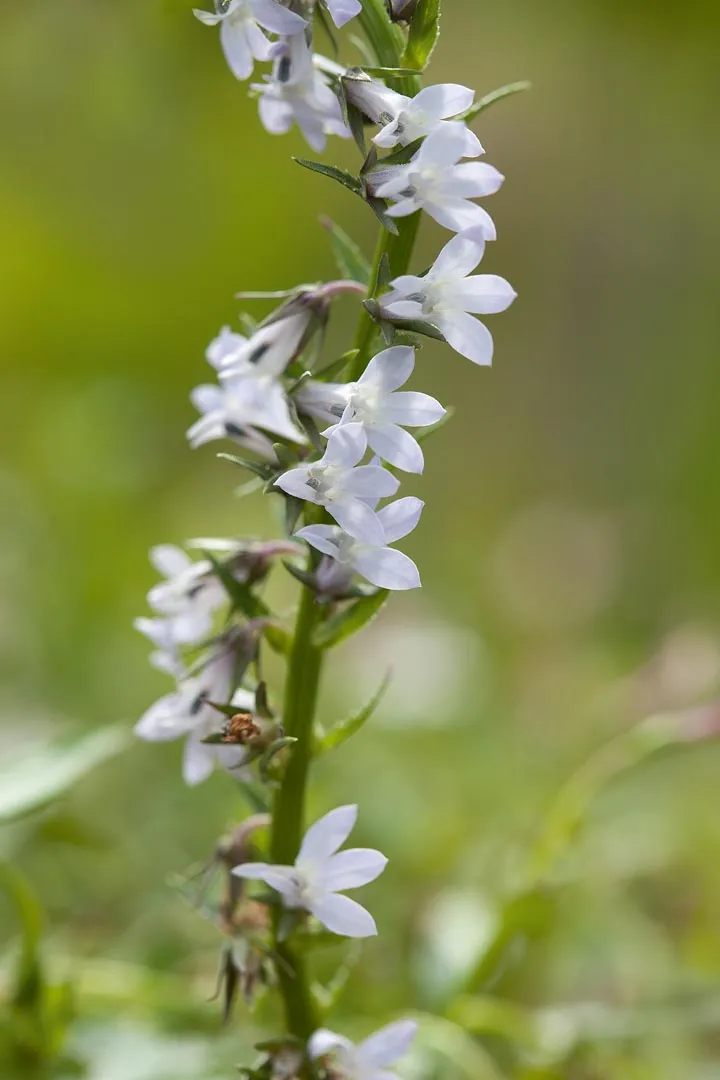
A highly variable perennial from North America with elegant spires of icy, lavender-blue flowers that can appear as early as late May and persist until the beginning of August. It tolerates dry soils better than most.
60cm. RHS H4.
10
Lobelia angulata
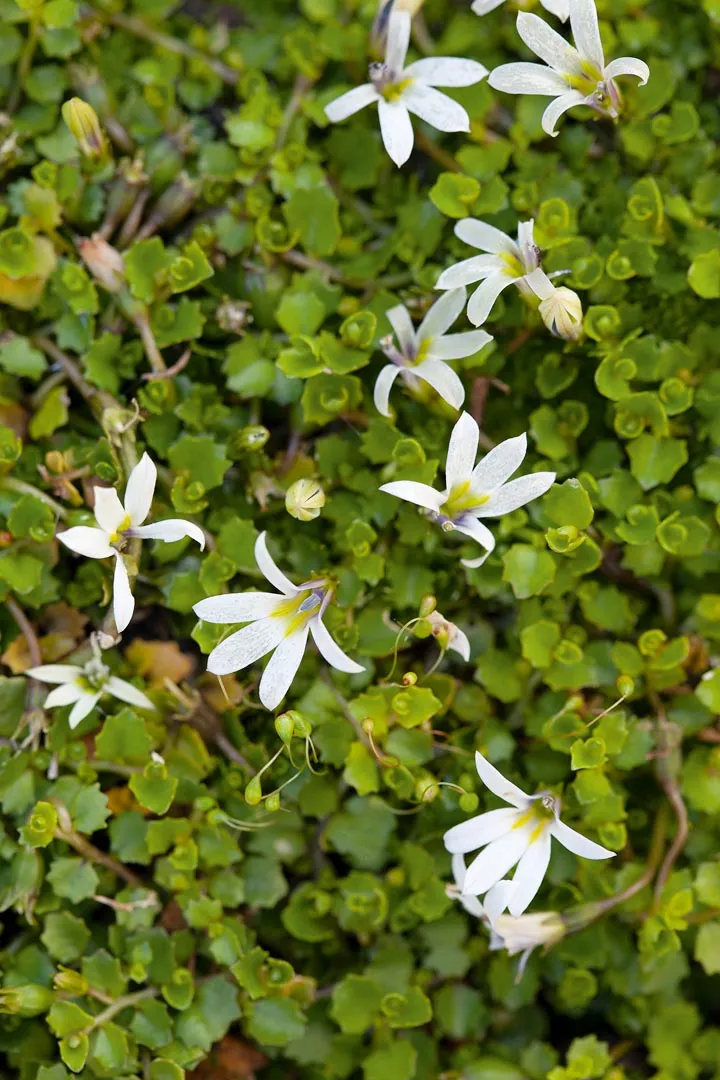
This diminutive, creeping species grows in woodland and alongside streams in its native New Zealand. Small, white flowers from June to September. Good for a container on the north side of the house. 10cm.
RHS H4, USDA 6a-9b.
11
Lobelia inflata
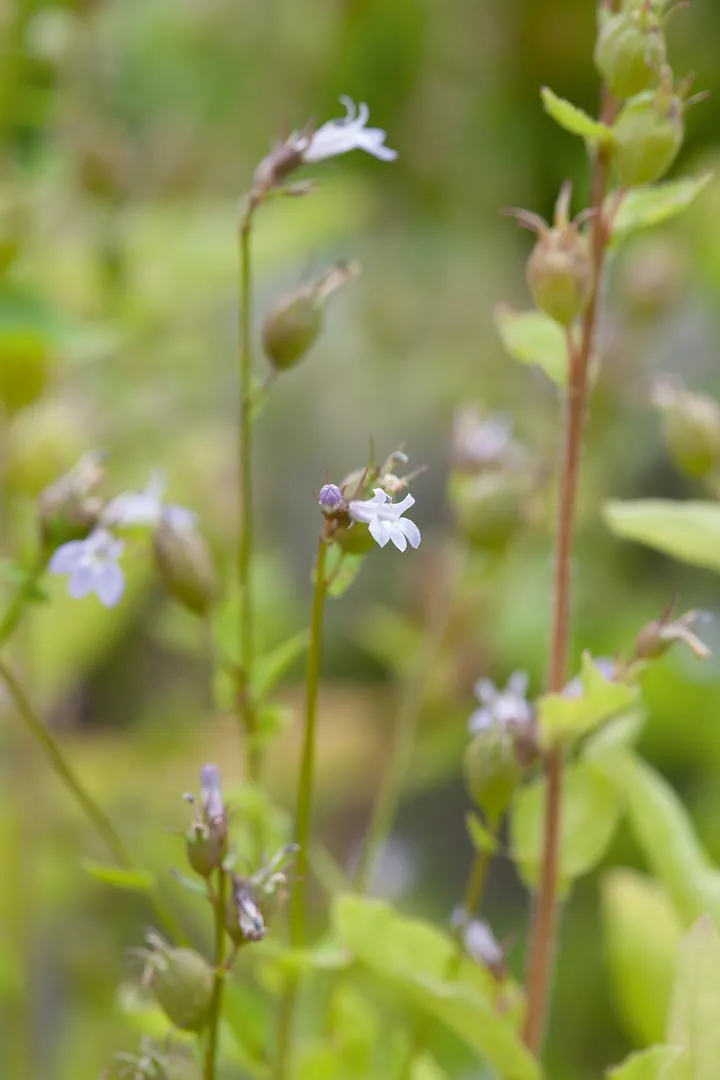
Annual species from the east coast of the USA with small, light-blue flowers. May behave like a biennial but tends not to overwinter well. It’s used as an emetic plant and has the rather graphic common name of pukeweed.
15cm-1m.
12
Lobelia siphilitica f. albiflora ‘Alba’

White form of Lobelia siphilitica with less vigour but still producing tall flower spikes above bright-green foliage. Can be planted as a marginal pond plant with its roots fully submerged.
1.2m. RHS H4.
13
Lobelia x speciosa ‘White Witch’
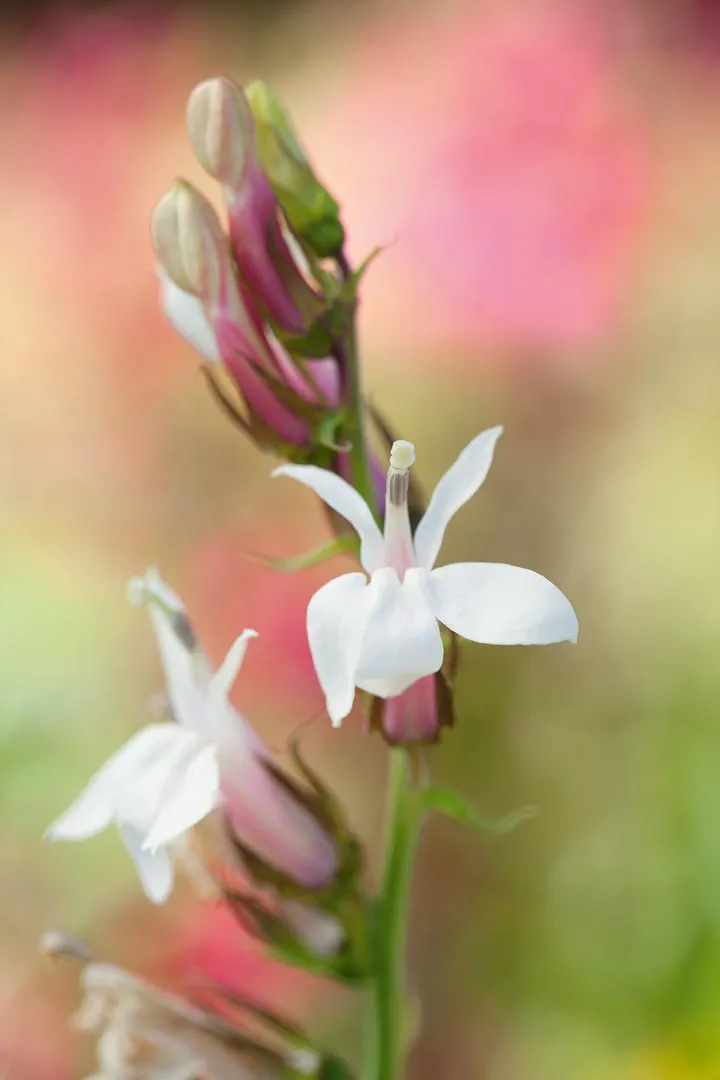
An exciting new cultivar, but with limited availability. The large, white flowers have a dash of pink in the throat. Barry admires its showy flowers, but admits it is a weak grower.
60-80cm. RHS H4.
Where to buy lobelia
Burncoose Nursery
Gwennap, Redruth, Cornwall TR16 6BJ. Tel 01209 860316, burncoose.co.uk
Beth Chatto’s Nursery
Elmstead Market, Colchester, Essex CO7 7DB. Tel 01206 822007, bethchatto.co.uk
Cotswold Garden Flowers
Sands Lane, Badsey, Evesham, Worcestershire WR11 7EZ. Tel 01386 422829, cotswoldgardenflowers.co.uk
Farmyard Nurseries
Dol Llan Road, Llandysul, Carmarthenshire SA44 4RL. Tel 01559 363389, farmyardnurseries.co.uk
Marchants Hardy Plants
2 Marchants Cottages, Mill Lane, Laughton, East Sussex BN8 6AJ. Tel 01323 811737, marchantshardyplants.co.uk
Special Plants
Greenways Lane, Cold Ashton, Wiltshire SN14 8LA. Tel 01225 891686, specialplants.net





